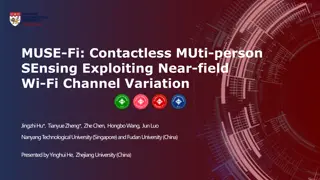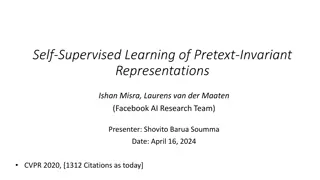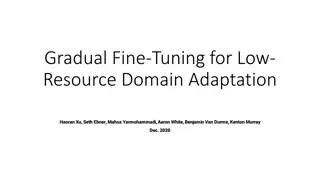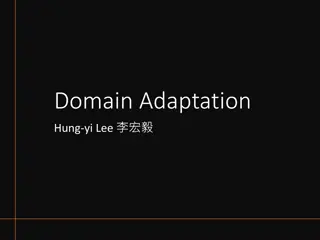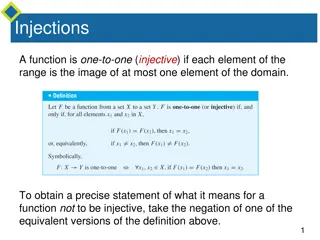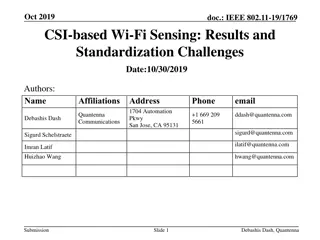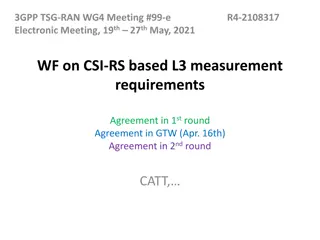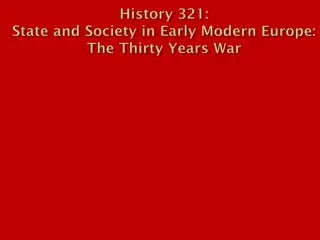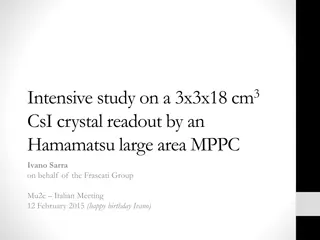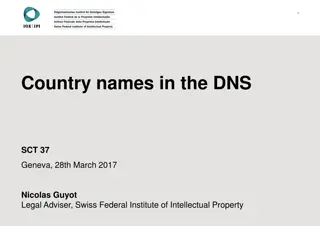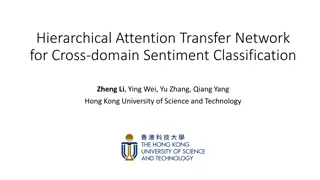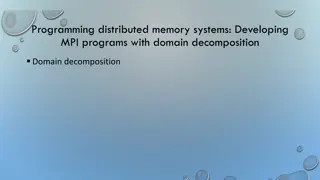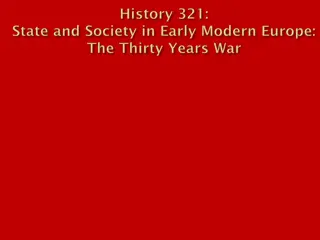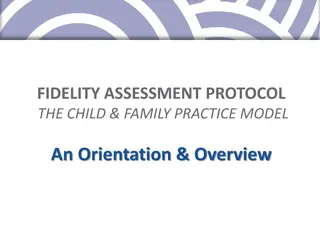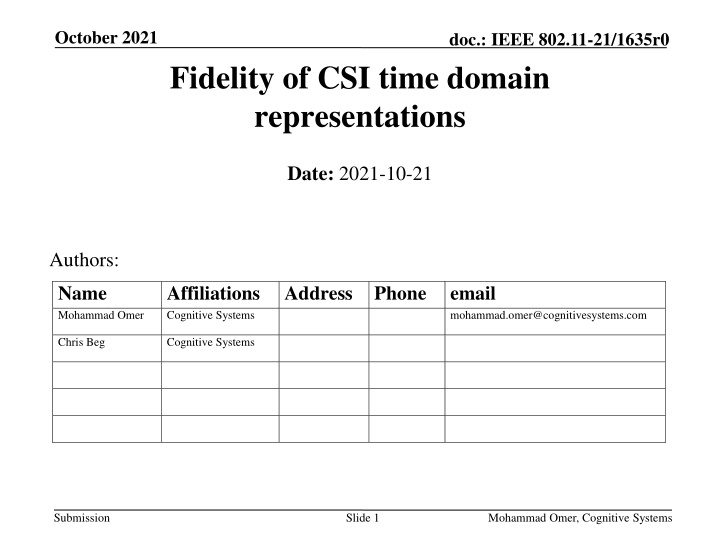
Enhancing Channel State Information Representation in IEEE Communications
Explore the intrinsic dimensionality of CSI waveform in IEEE 802.11-21/1635r0 document, focusing on compression and de-noising through time-domain representations. Understand the comparison between Truncated Channel Impulse Response (TCIR) and CSI, and determine optimal TCIR representation for improved channel frequency response. Discover how limiting CIR pulses affects the channel frequency response.
Download Presentation

Please find below an Image/Link to download the presentation.
The content on the website is provided AS IS for your information and personal use only. It may not be sold, licensed, or shared on other websites without obtaining consent from the author. If you encounter any issues during the download, it is possible that the publisher has removed the file from their server.
You are allowed to download the files provided on this website for personal or commercial use, subject to the condition that they are used lawfully. All files are the property of their respective owners.
The content on the website is provided AS IS for your information and personal use only. It may not be sold, licensed, or shared on other websites without obtaining consent from the author.
E N D
Presentation Transcript
October 2021 doc.: IEEE 802.11-21/1635r0 Fidelity of CSI time domain representations Date: 2021-10-21 Authors: Name Mohammad Omer Affiliations Cognitive Systems Address Phone email mohammad.omer@cognitivesystems.com Chris Beg Cognitive Systems Submission Slide 1 Mohammad Omer, Cognitive Systems
October 2021 doc.: IEEE 802.11-21/1635r0 Abstract CSI representation has an intrinsic dimensionality to it, dictated by the physical process of its formation and computation. The dimensionality can be exploited for compression and de-noising by looking at the time- domain converted version. We show what does the intrinsic dimensionality of CSI waveform looks like, and what is the statistical behaviour over some sampled indoor channels. Submission Slide 2 Mohammad Omer, Cognitive Systems
October 2021 doc.: IEEE 802.11-21/1635r0 Background Use of a Truncated Channel Impulse Response (CIR) as a sensing measurement result has been discussed [1][2] Truncated Channel impulse response (CIR) is a time-domain representation of the usual Channel State Information (CSI) representation of a channel between a Sensing Transmitter and a Sensing Receiver CSI and TCIR are comparable Truncated CIR is formed by discarding time-domain samples based on criteria TCIR is not comparable to CSI but has been shown in examples to be an acceptable substitution Favorable response to Straw Polls Slide 3 Submission Mohammad Omer, Cognitive Systems
October 2021 doc.: IEEE 802.11-21/1635r0 Example CSI vs CIR Magnitude of the Complex frequency response of the channel across the full channel bandwidth All carriers required to transfer full channel information = CSI IDFT of CSI converts to the time domain Energy in the channel is clustered in few time domain pulses around a direct path signal = PDP Submission Slide 4 Mohammad Omer, Cognitive Systems
October 2021 doc.: IEEE 802.11-21/1635r0 What happens to the channel frequency response if I limit the CIR pulses? Limit the number of pulses in the time domain i.e. Select n pulses and set all other pulses to zero Convert to a channel frequency response in the frequency domain Inverse DFT/FFT Colored lines show the frequency domain response of an increasing complex time domain response i.e. n increasing n small: Red; n large: Green Normalized magnitude Sub-carrier number (in a 20-MHz bandwidth) Submission Slide 5 Mohammad Omer, Cognitive Systems
October 2021 doc.: IEEE 802.11-21/1635r0 Determining an Optimal TCIR Representation The trade-off in representing a CSI with few time domain pulses is like an usual error (or SNR) vs complexity curve This curve can be seen by allowing higher and higher degrees of freedom to the inverse DFT for fitting to the CSI waveform Generate a measure of a reconstruction by transforming the TCIR back to the CSI domain and calculating an error between CSI and reconstructed CSI Gray line vs colored line Compare to the power in the reconstructed CSI (as a proxy for the signal power) Submission Slide 6 Mohammad Omer, Cognitive Systems
October 2021 doc.: IEEE 802.11-21/1635r0 Determining an Optimal TCIR Representation CSI-SNR increases rapidly with increasing time domain pulses However, CSI-SNR levels out quickly Beyond a threshold, increasing the number of time domain pulses has limited value Threshold may be observed to be around 8 to 10 time domain pulses CSI SNR (dB) Number of time domain pulses, n, used in reconstruction T???? CSI?? T???? CSI SNR? (dB) = 10log10 Submission Slide 7 Mohammad Omer, Cognitive Systems
October 2021 doc.: IEEE 802.11-21/1635r0 Visualization in Time and Frequency Domain CSI reconstruction using different DoF in the IFFT Submission Slide 8 Mohammad Omer, Cognitive Systems
October 2021 doc.: IEEE 802.11-21/1635r0 Visualization in Time and Frequency Domain Pulses in green box likely contributed by the channel Pulses under yellow arrows likely to be a contribution of noise Pulses represent a long reflection distance from the core activity in the channel Analogy in the frequency domain: Jagged response is most likely a contribution of noise Submission Slide 9 Mohammad Omer, Cognitive Systems
October 2021 doc.: IEEE 802.11-21/1635r0 De-Noising a Channel Response Truncating the CIR reduces the data content of the channel response BUT CSI-SNR shows that the information of the channel response is not discarded by the truncation In fact Truncating the CIR may favour removal of noise and the preservation of signal Appropriate truncation of the CIR removes noise from the channel representation Submission Slide 10 Mohammad Omer, Cognitive Systems
October 2021 doc.: IEEE 802.11-21/1635r0 Operating Point Potential overfitting to noise CSI SNR (dB) Potential underfitting to the channel Number of time domain pulses, n, used in reconstruction How to determine the optimum operating point i.e., How many time-domain pulses should represent the channel Submission Slide 11 Mohammad Omer, Cognitive Systems
October 2021 doc.: IEEE 802.11-21/1635r0 Statistical Analysis of Indoor Channel Data Sets An analysis of 2000 representative indoor channel data sets was carried out to determine the optimum operating point (i.e. the optimum number of time- domain pulses to represent the channel) Optimum operating point is a function of adequate representation of the channel vs minimizing the number of time-domain pulses. 20-MHz measurement bandwidth used with 52 active subcarriers Adequate representation is considered to be when the CSI-SNR change is within 1% of maximum value Submission Slide 12 Mohammad Omer, Cognitive Systems
October 2021 doc.: IEEE 802.11-21/1635r0 Statistical Analysis of Indoor Channel Data Sets Average number time domain pulses over all data sets is 9 to 11 ( compression ratio to CSI representation 4.7 to 5.8) 95% of all data sets are adequately represented by fewer than 17 time-domain pulses ( compression ratio to CSI representation >3.0) 5% to 95% bound 25% to 75% bound | median; + mean Number of time domain pulses, n, used in reconstruction Submission Slide 13 Mohammad Omer, Cognitive Systems
October 2021 doc.: IEEE 802.11-21/1635r0 Summary CSI-SNR is introduced which describes the Signal-to-Noise ratio of a TCIR It is shown that it is possible to over represent a CSI by a TCIR and that discarding time-domain pulses can reduce noise in the representation of the channel response It is shown that there is an optimum number of time-domain pulses that make up a TCIR An analysis of 2000 data sets show that the optimum number of time-domain pulses that make up a TCIR averages 9 to 11 and is almost always fewer than 17 (95%) for a 20 MHz OFDM transmission Submission Slide 14 Mohammad Omer, Cognitive Systems
October 2021 doc.: IEEE 802.11-21/1635r0 References [1] 11-21-0660-00-00bf-truncated-power-delay-profile.pptx [2] 11-21-1288-02-00bf-truncated-power-delay-profile-follow-up Submission Slide 15 Mohammad Omer, Cognitive Systems


